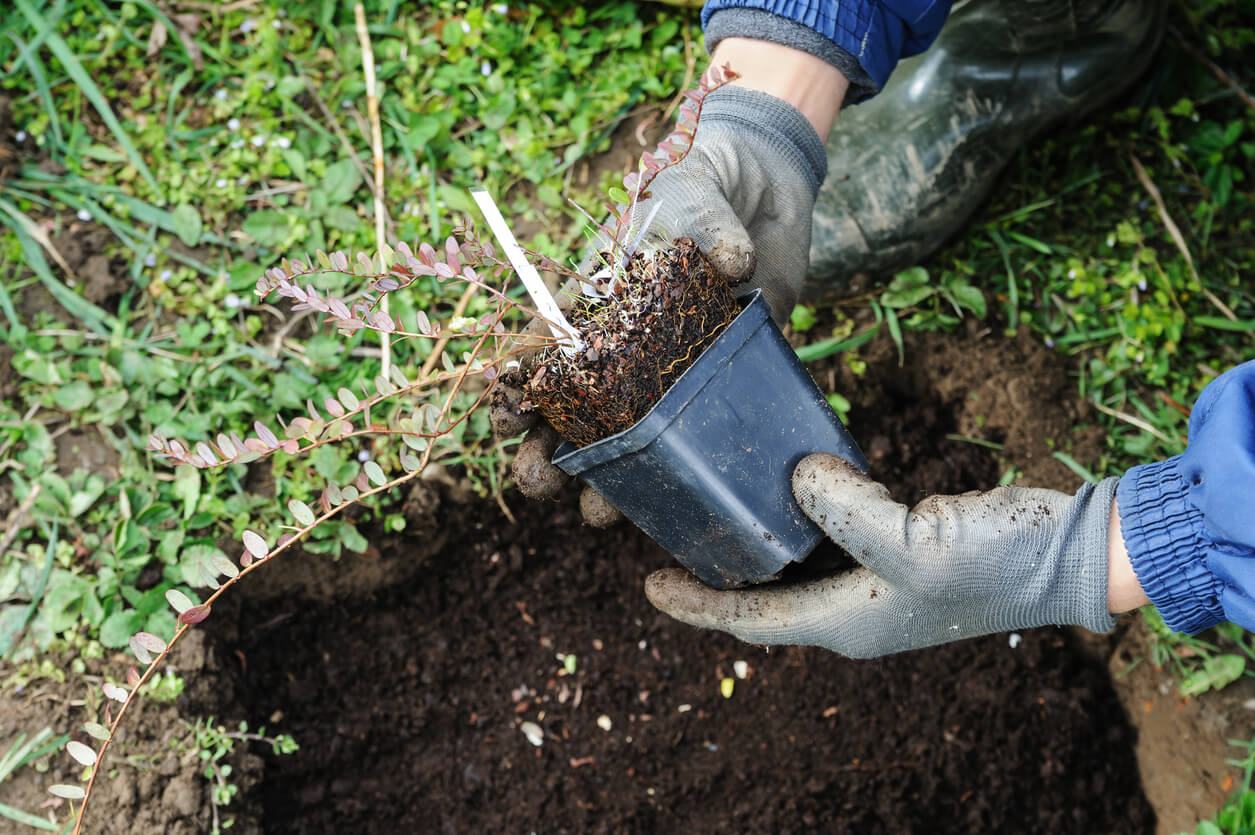
Gardener planting cranberry seedling
You can grow cranberries from seeds, cuttings, or seedlings, but it depends on your level of patience. Are you prepared to wait up to four years while your cranberry vines establish themselves? Growing cranberries from seed will require a lot of waiting. For the not-so-patient gardener, we recommend cuttings or seedlings.
Seed Planting Process
If you prefer starting your cranberry patch from scratch, you’ll need to get seeds. Some seeds are available that are labeled as pre-stratified: that means they’ve already gone through an emulation of a dormant period much like a regular winter.
If your seeds aren’t pre-stratified, you’ll have to do that yourself. It’s not hard, but it does take time. You need to keep your seeds in the fridge for three months before you sow them indoors. If your seed package doesn’t include specific directions on cold stratifying, follow these steps:
- Put a lightly damp paper towel into a gallon-size plastic bag.
- Spread the seeds out on the paper towel.
- Zip the bag three-quarters of the way shut, leaving the bag partly open for airflow.
- Put the bag in the back of your fridge for three months, checking it periodically.
- Keep the paper towel lightly damp for the duration.
In the spring, plant your seeds in pots 3 to 4 inches in diameter, with two seeds to each pot. Plant your seeds in an ericaceous (acidic) potting mix formulated for members of the heather family; that includes rhododendrons, azaleas, and camellias, as well as blueberries and cranberries. Keep the soil moist but not soggy, and don’t let it dry out.
Keep your pots in a warm spot with a consistent temperature of about 70 degrees F. It might be a good idea to use a heating mat. Seeds should germinate in three to five weeks, although they sometimes take longer. This is the beginning of your journey of gardening patience.
After the seeds germinate, eliminate the weaker of the two seedlings in the pot—it’s all about survival of the fittest! Keep them in a warm spot with temperatures between 60 and 75 degrees F. Keep them consistently watered, but not waterlogged—and don’t let them dry out.
Keep your young seedlings inside for about a year. If they’re happy and healthy after a year, you can plant them outside in the spring or fall.
Growing from Cuttings
The method requiring a little less patience is to take cuttings from existing healthy and productive cranberry bushes. This method is more reliable than starting from seed, and cuttings tend to take root easily. Of course, they’ll still be a long way from producing, but it’s a start.
In the spring or early in the summer, cut your cranberry stems about 8 inches long. Remove all the leaves except for four or five at the top. Take your cuttings and dip the cut ends into rooting hormone powder; this will give the cuttings a little growth support.
Prepare some small pots with acidic potting mix. You can also amend regular potting mix with ericaceous compost and/or peat moss. Plant the cuttings, one to a pot, about 4 inches down. Put them in a warm spot with indirect sunlight. Water evenly, and don’t let them dry out.
Growing from Seedlings
The shortest distance between planting cranberry vines and harvesting their berries is to plant seedlings—the older, the better. You can get plants between one- and three-years-old from nurseries. Cranberry vines tend to start producing when they’re three or four years old, so keep that in mind if you choose to plant seedlings.
Be sure that you have the proper soil prepared in your garden to host your cranberry vines. And whatever you do, don’t let their soil dry out. Cranberries are hardy plants, but they don’t do well if they’re not well watered.
Have you tried growing cranberries from seeds, cuttings, or seedlings? Which method do you prefer—and why? Please share your experiences with us by commenting below.


 Previous
Previous

